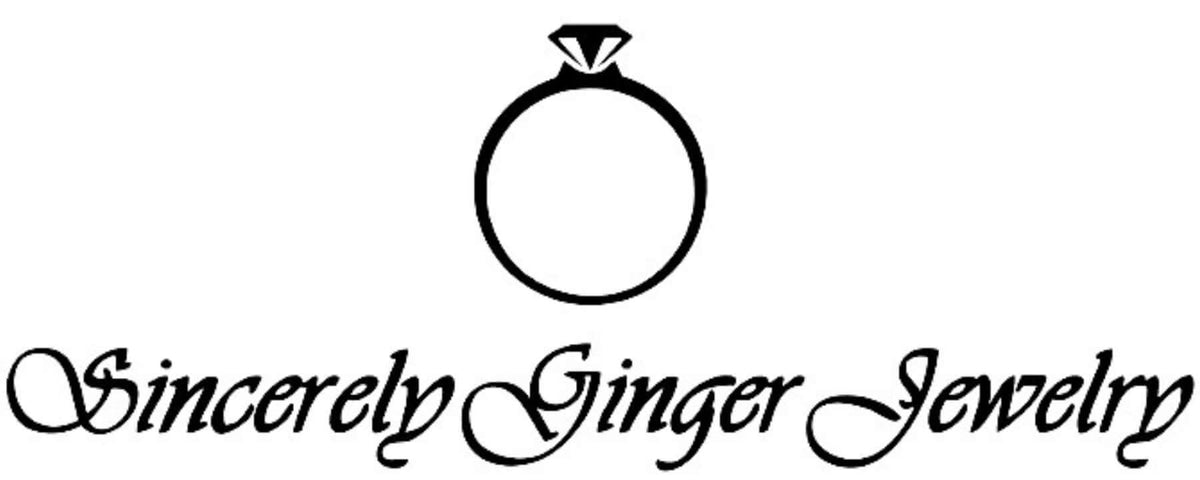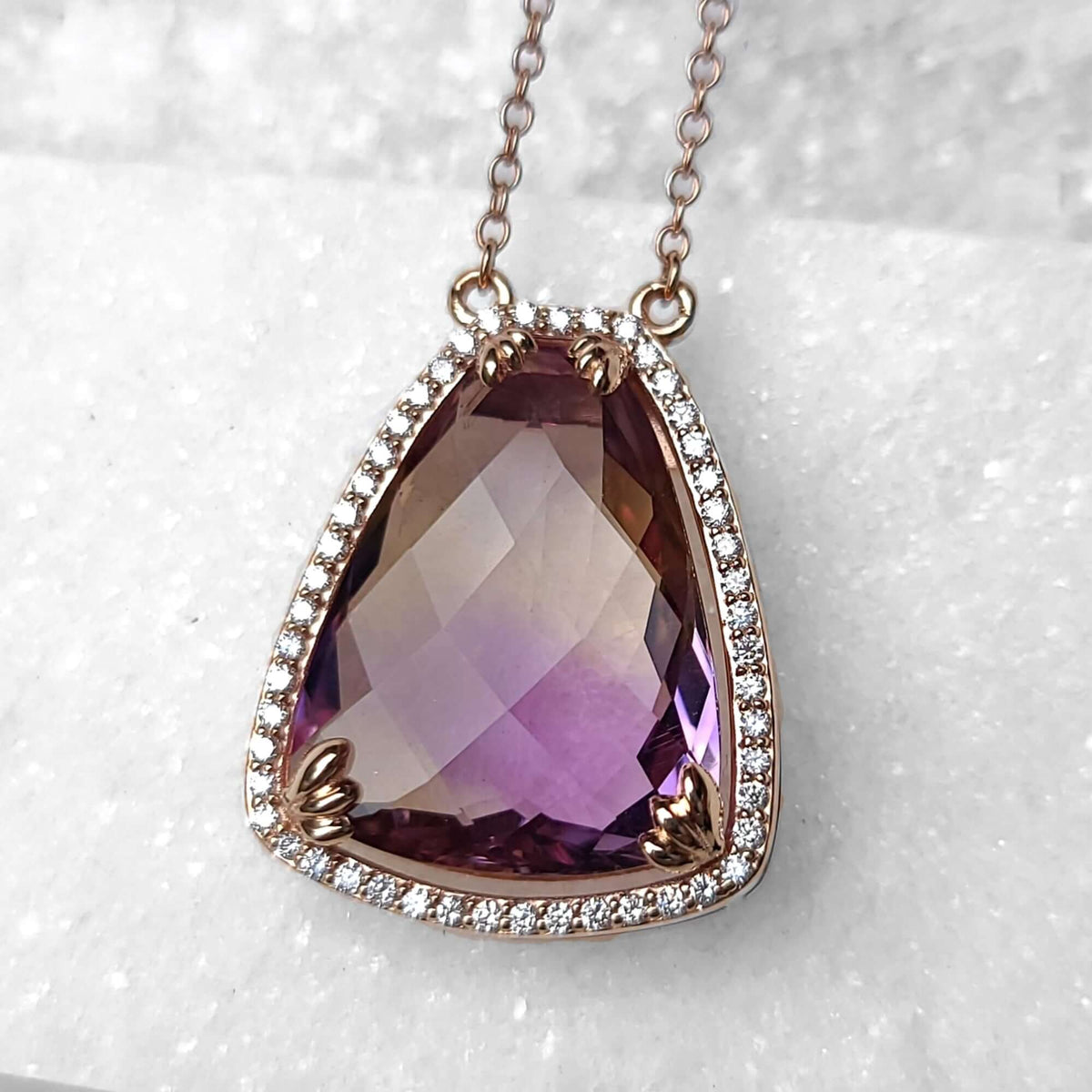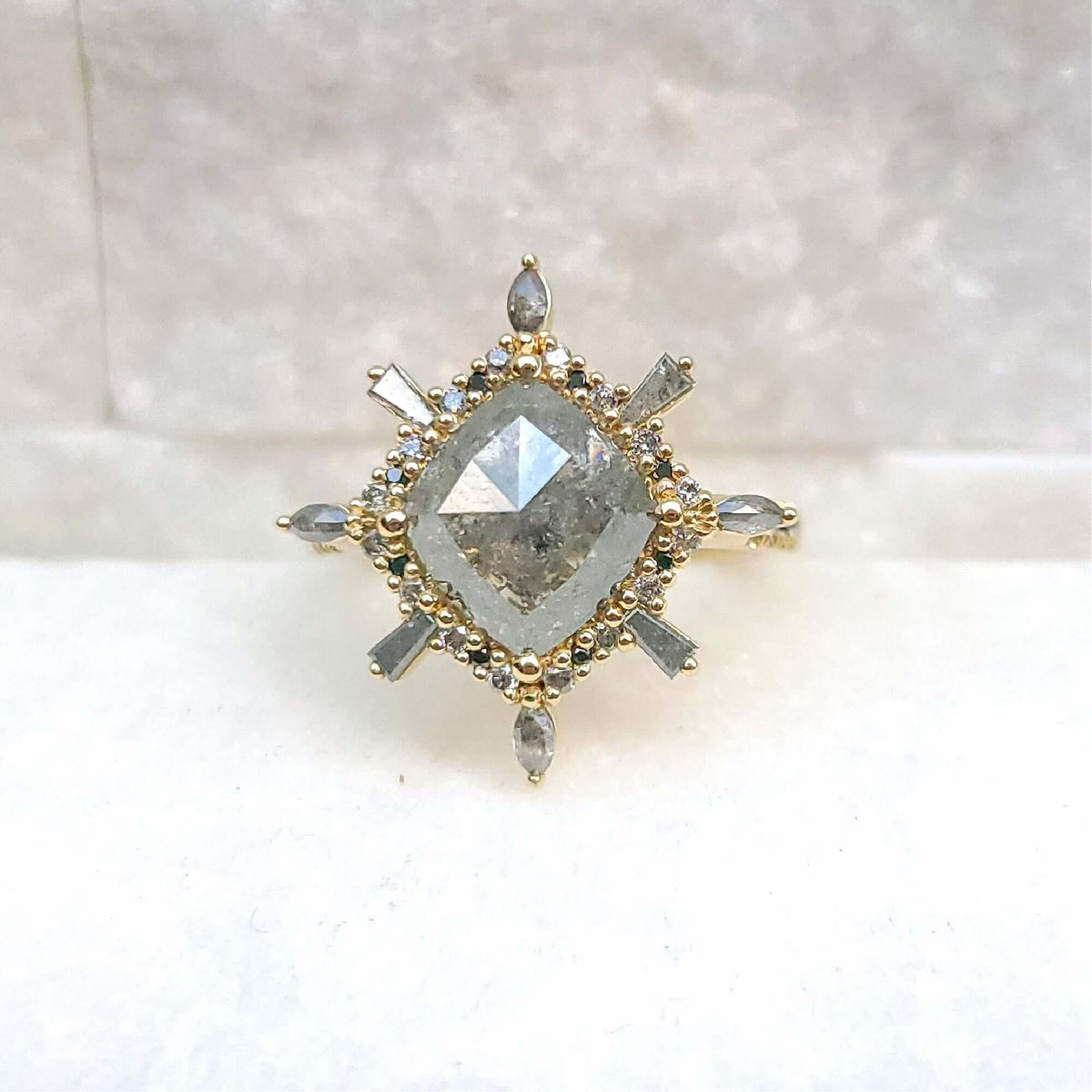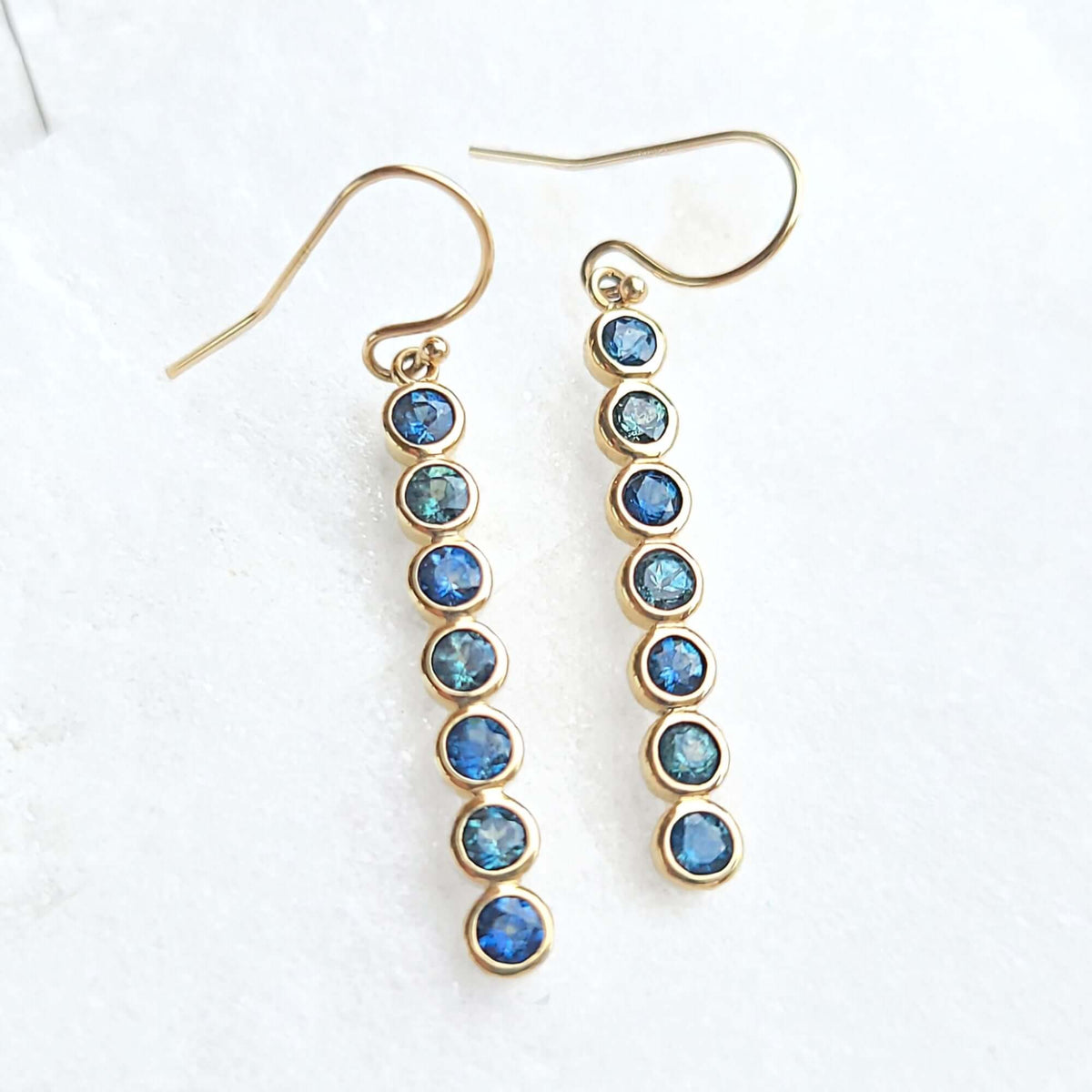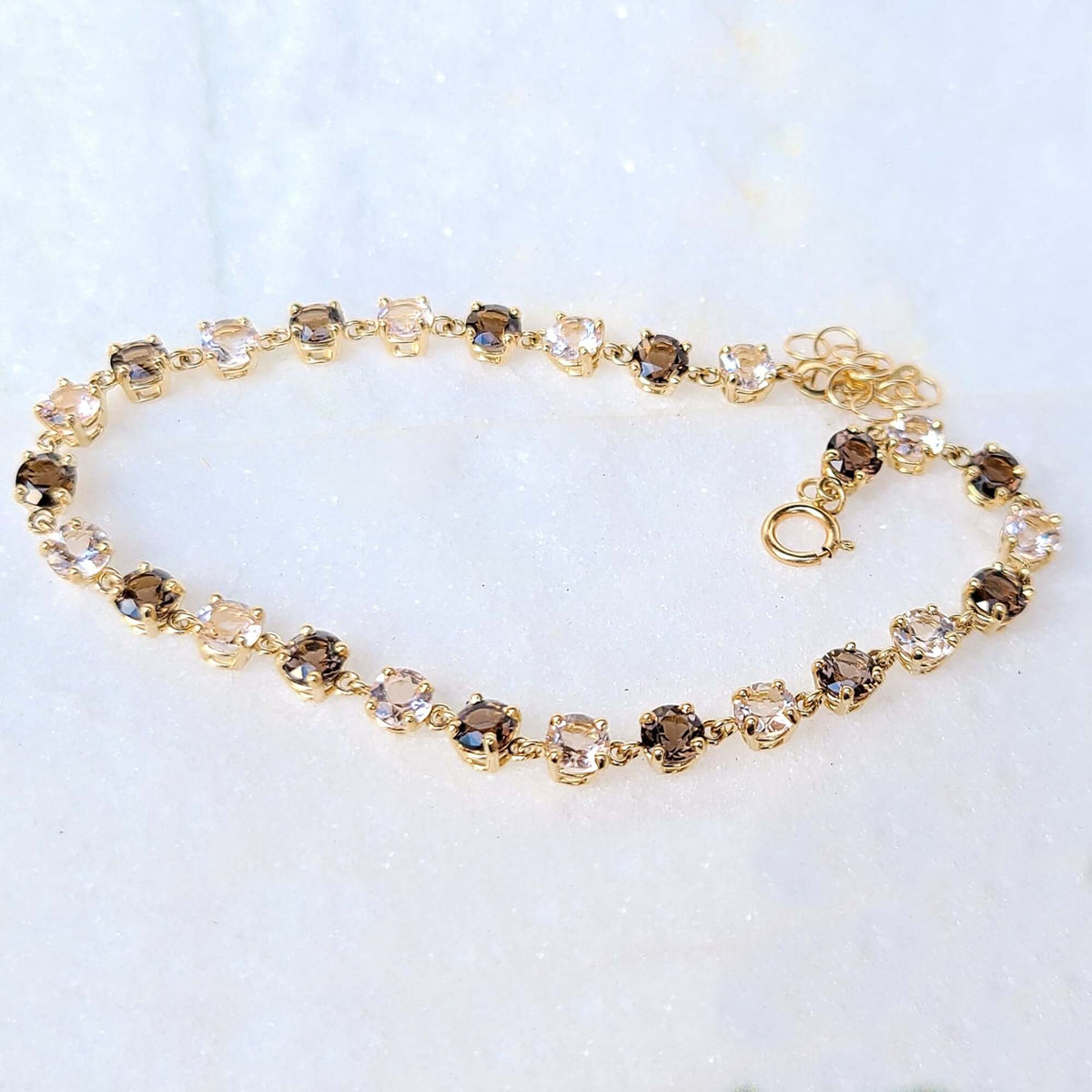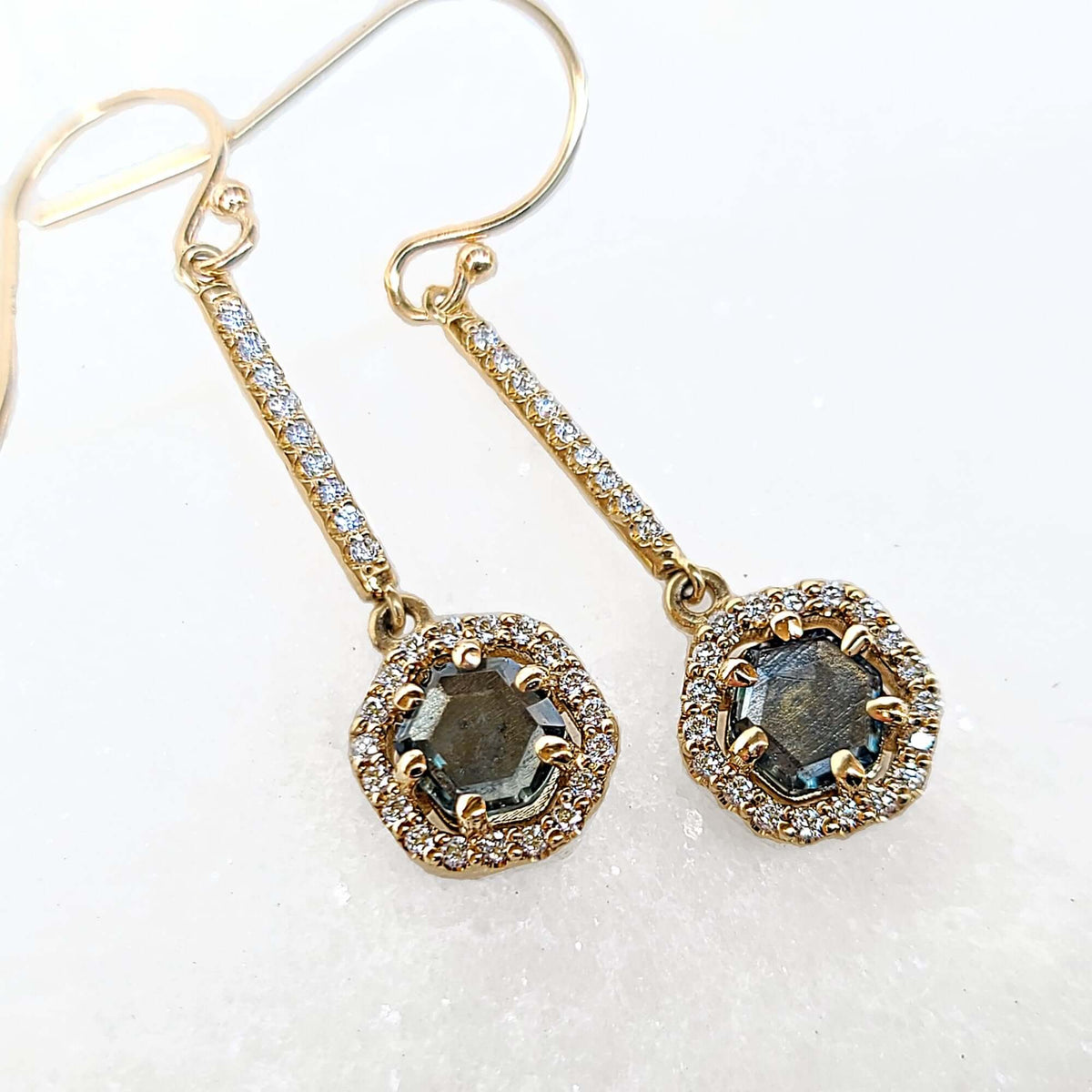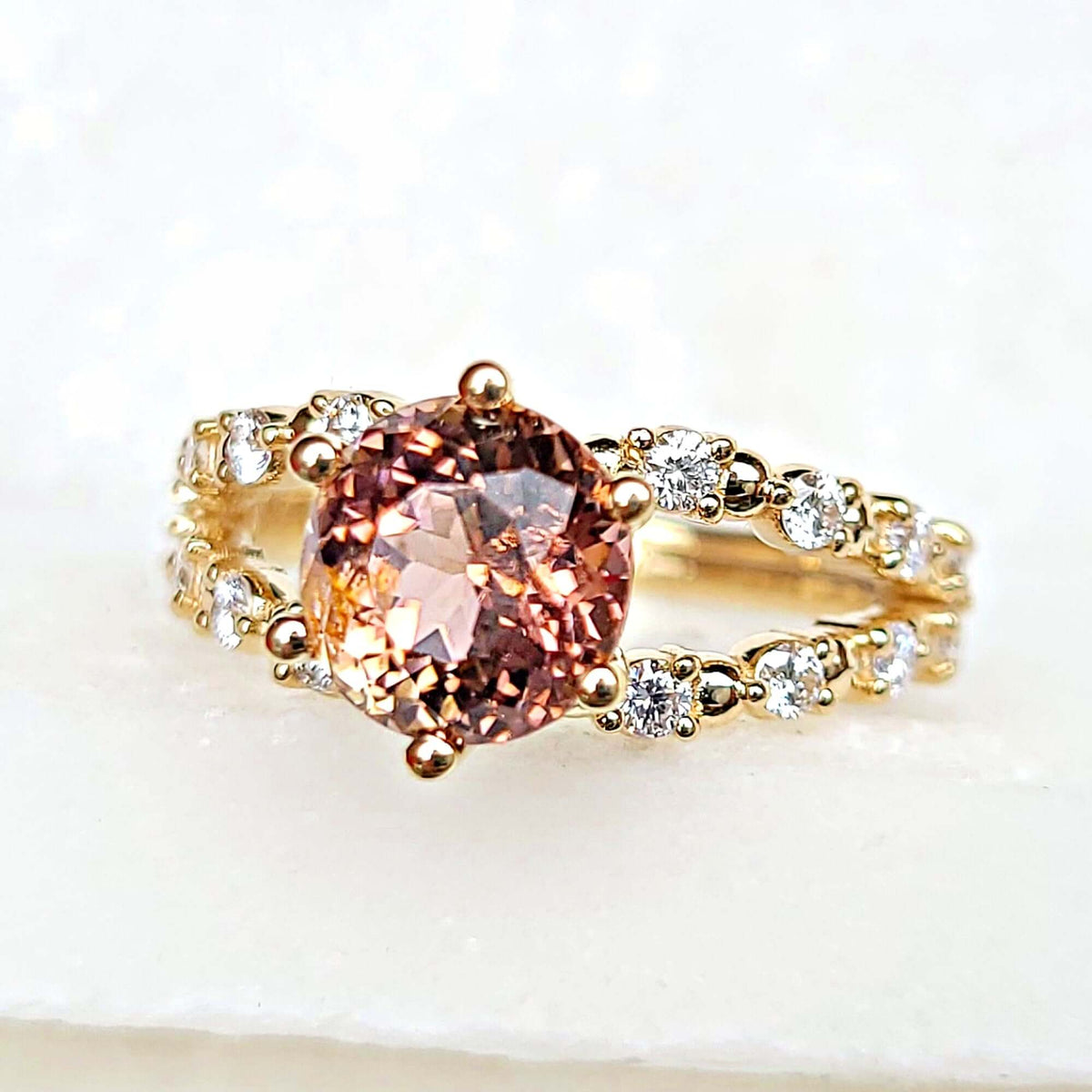DIAMOND CUTS EXPLAINED: TYPES, SHAPES, AND STYLES
Diamonds have captivated humanity for centuries, with their brilliance and beauty. At the heart of a diamond's allure lies its cut, which has a profound influence on its sparkle and overall appearance. Diamond cuts encompass a wide array of shapes and styles, each offering unique characteristics that cater to different preferences and occasions. From the classic round cut to the sophisticated emerald cut, the world of diamond shapes is diverse and fascinating.
This article delves into the intricacies of diamond cuts, exploring their various types and styles. It examines the fundamentals of diamond cutting, highlighting popular shapes such as the princess cut, cushion cut, and pear cut. The discussion also covers factors that affect cut quality, including proportions and symmetry. By the end, readers will gain a comprehensive understanding of diamond cuts, enabling them to make informed decisions when selecting these precious gems.
Understanding Diamond Cuts
Diamond cut refers to the style, design, and craftsmanship used when shaping a diamond for polishing. It encompasses the diamond's shape, symmetry, proportioning, and polish. The cut of a diamond is a crucial factor in determining its overall quality and appearance. It involves the arrangement of facets, which are small, flat surfaces that modify the shape and appearance of a diamond crystal. The cut is possibly the most important of the 4Cs (Cut, Color, Clarity, and Carat) in diamond quality assessment. It has a profound influence on a diamond's brilliance, fire, and scintillation. A superior cut offers enhanced sparkle and overall beauty, making it a critical factor in a diamond's value and price.
Cut quality is graded by reputable organizations such as the Gemological Institute of America (GIA) and the American Gem Society (AGS). The GIA grades diamond cuts from Excellent to Poor, while the AGS uses a scale from Ideal to Poor. For the best quality and brilliance, it is recommended to consider only Excellent or Ideal cut diamonds. The cut of a diamond directly impacts its interaction with light, which determines its brilliance and sparkle. A well-cut diamond maximizes the light that strikes each pavilion, reflecting it back through the crown and table. This interaction with light results in three key characteristics:
- Brilliance: The brightness of white light reflection from the diamond's surface and interior.
- Fire: The dispersion of light into spectral colors, creating flashes of color.
- Scintillation: The pattern of light and dark areas and the sparkle when the diamond is moved.
The quality of a diamond's cut is determined by several factors, including its proportions, symmetry, and polish. Proper proportions ensure that light enters the diamond and is reflected back to the viewer's eye, rather than escaping through the sides or bottom. Symmetry refers to the precision of the facet arrangement, while polish affects the smoothness of the diamond's surface.
The Most Popular Diamond Cut Shapes
Round Cut
The round brilliant cut diamond is the most popular shape, accounting for approximately 75% of all diamonds sold. This cut has 58 facets, optimized to maximize light reflection and dispersion. Its versatility allows it to work well in almost any ring style. The round brilliant cut has evolved over time, with modern cutting techniques resulting in larger tables, smaller culets, and leaner facets to enhance brilliance and fire.
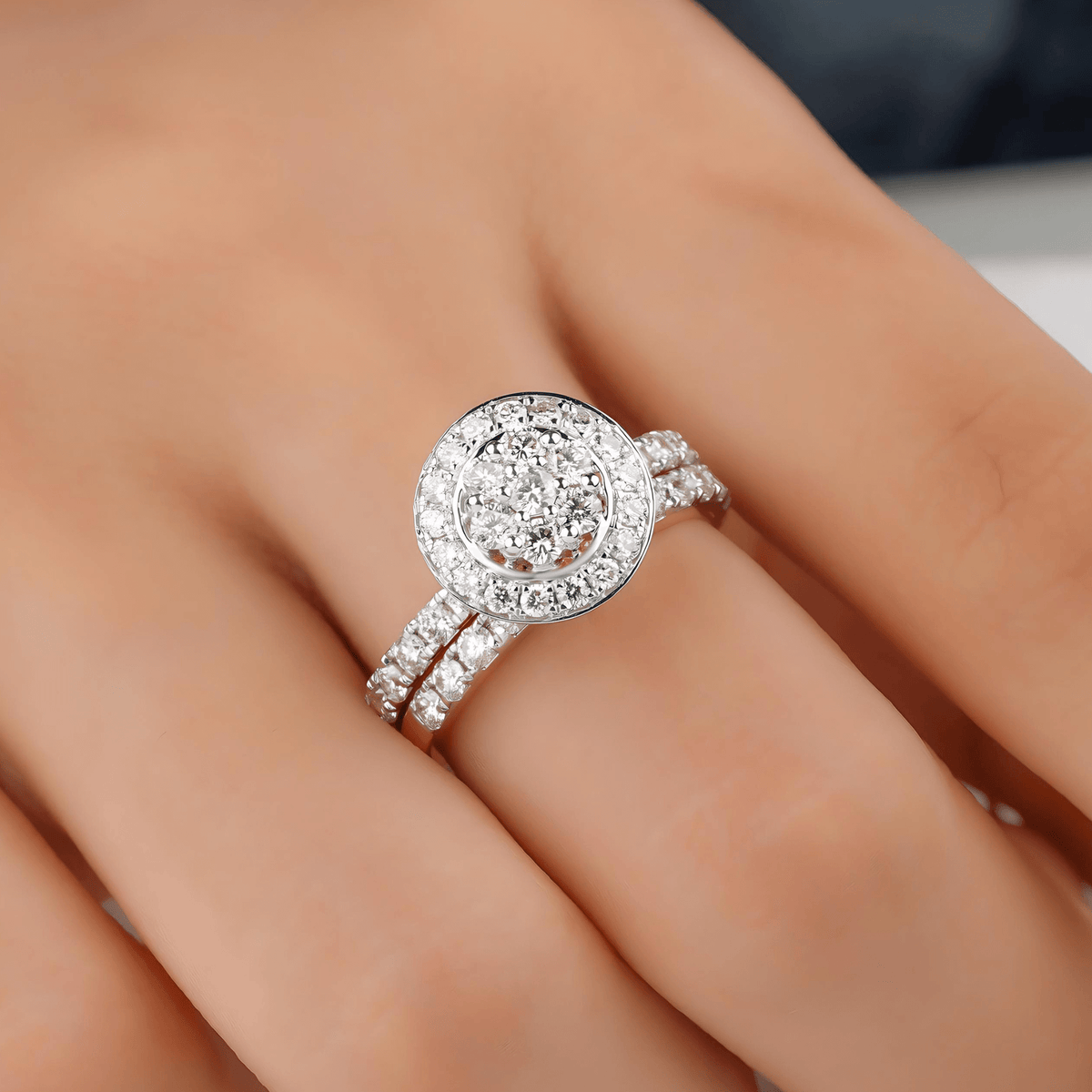
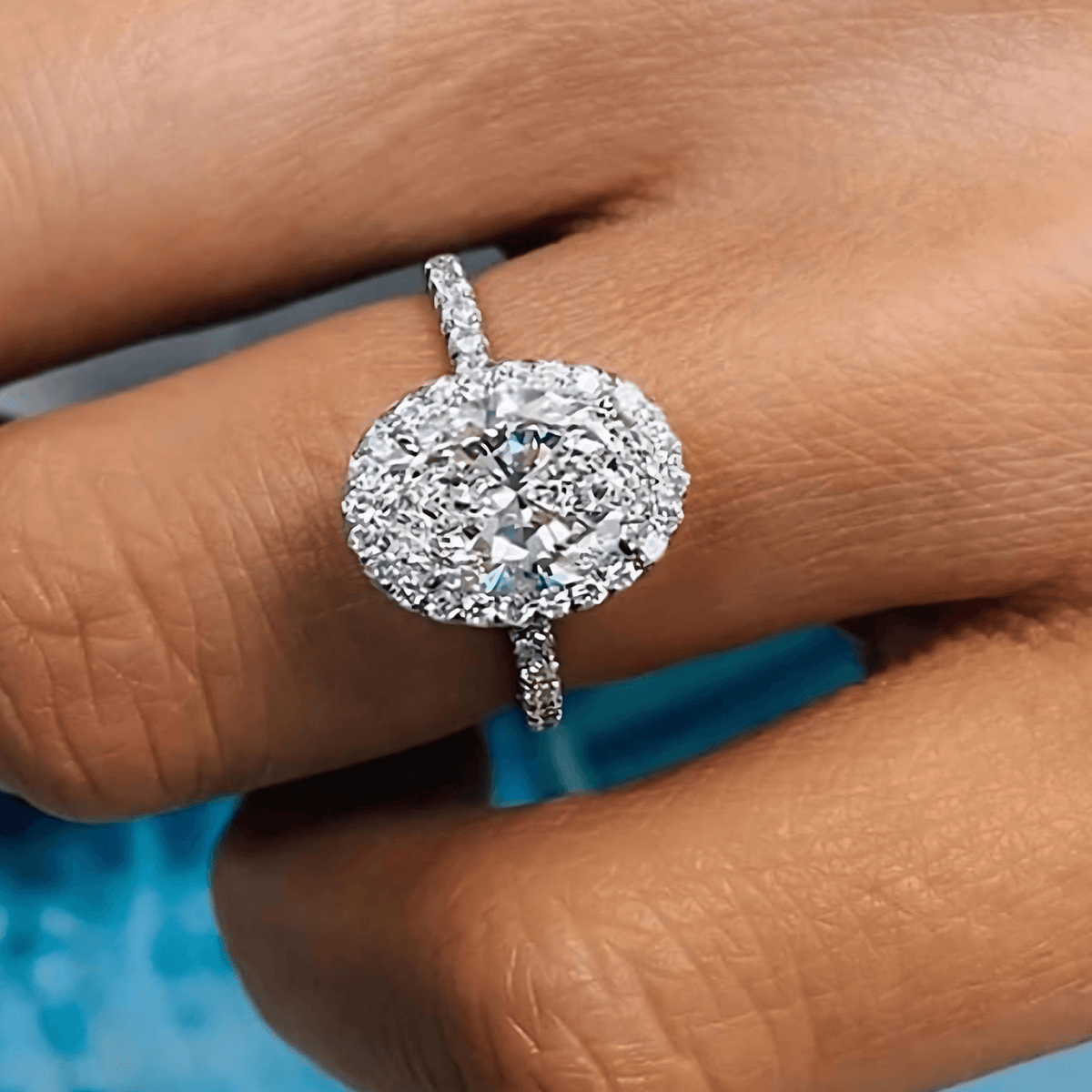
Oval Cut
Oval cut diamonds combine the brilliance of round cuts with an elongated shape. Invented in the 1960s by Lazare Kaplan, oval cuts have 58 facets and offer excellent light performance. They can make fingers appear longer and slimmer, and often look larger than round diamonds of the same carat weight. Oval cuts may exhibit a "bow-tie" effect, a dark area in the center of the stone, which should be minimal in well-cut diamonds.
Marquise Cut
Marquise cut diamonds, often known as the "Navette" cut (which means "little boat" in French), are another popular choice. This diamond is particularly suitable for traditional and vintage designs. The cut is elongated and pointed, mimicking a football or boat form. According to legend, King Louis XV of France commissioned this cut to mirror his mistress' smile. One enticing aspect is that the stone elevates carat weight, making it look bigger. The stone typically has 58 facets, resulting in great brilliance and fire.
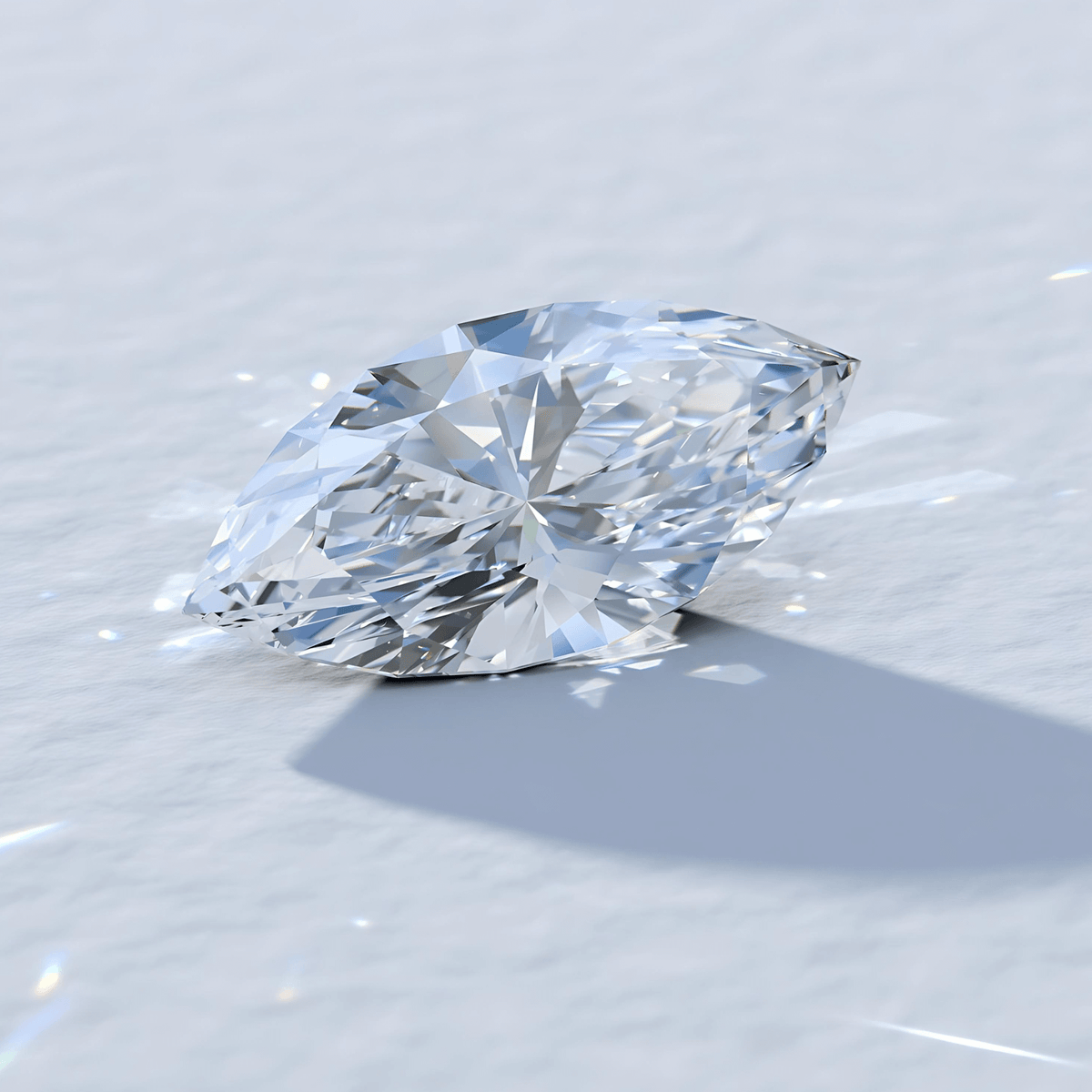
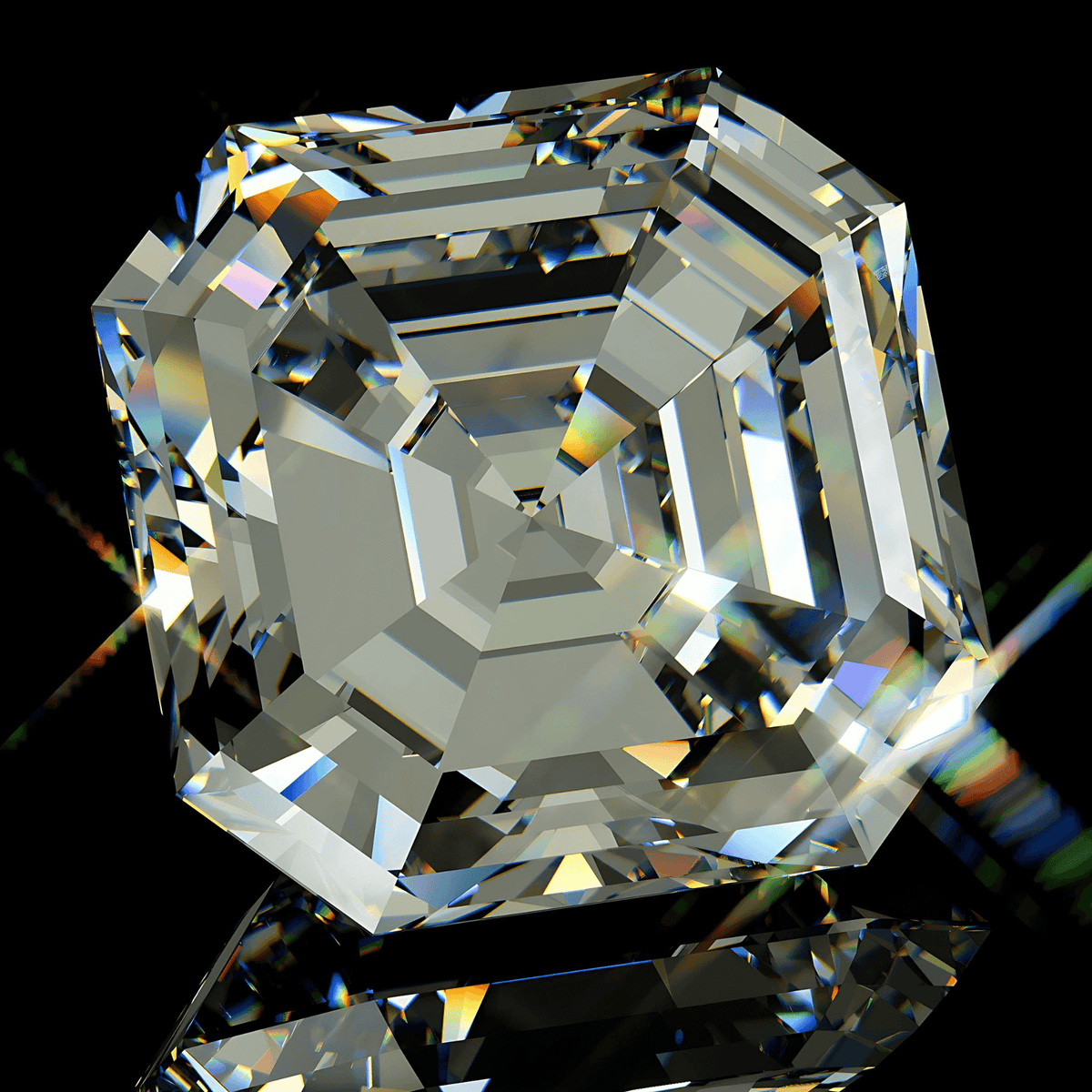
Asscher Cut
Asscher cut diamonds were created in 1902 by Joseph Asscher, a well-known diamond cutter from Amsterdam. The cut saw a comeback in the early 2000s, resulting in a modified version known as the Royal Asscher Cut. Asscher cut diamonds are squares with cropped corners, giving them an octagonal shape. They feature a characteristic "X" pattern seen from the top. Traditional Asscher cuts usually have 58 facets, but the Royal Asscher Cut has 74 facets for added illumination and fire.
Pear Cut
Pear cut diamonds incorporate characteristics of the round brilliant and marquise cut. It features rounded ends that taper to a point, like a teardrop or pear. Lodewyk van Berquem of Bruges established the pear cut in the middle of the fifteenth century. Pear diamonds with an excellent cut might appear quite bright and firey. The rounded end shines brighter, whereas the tip may produce intriguing light effects and fire.
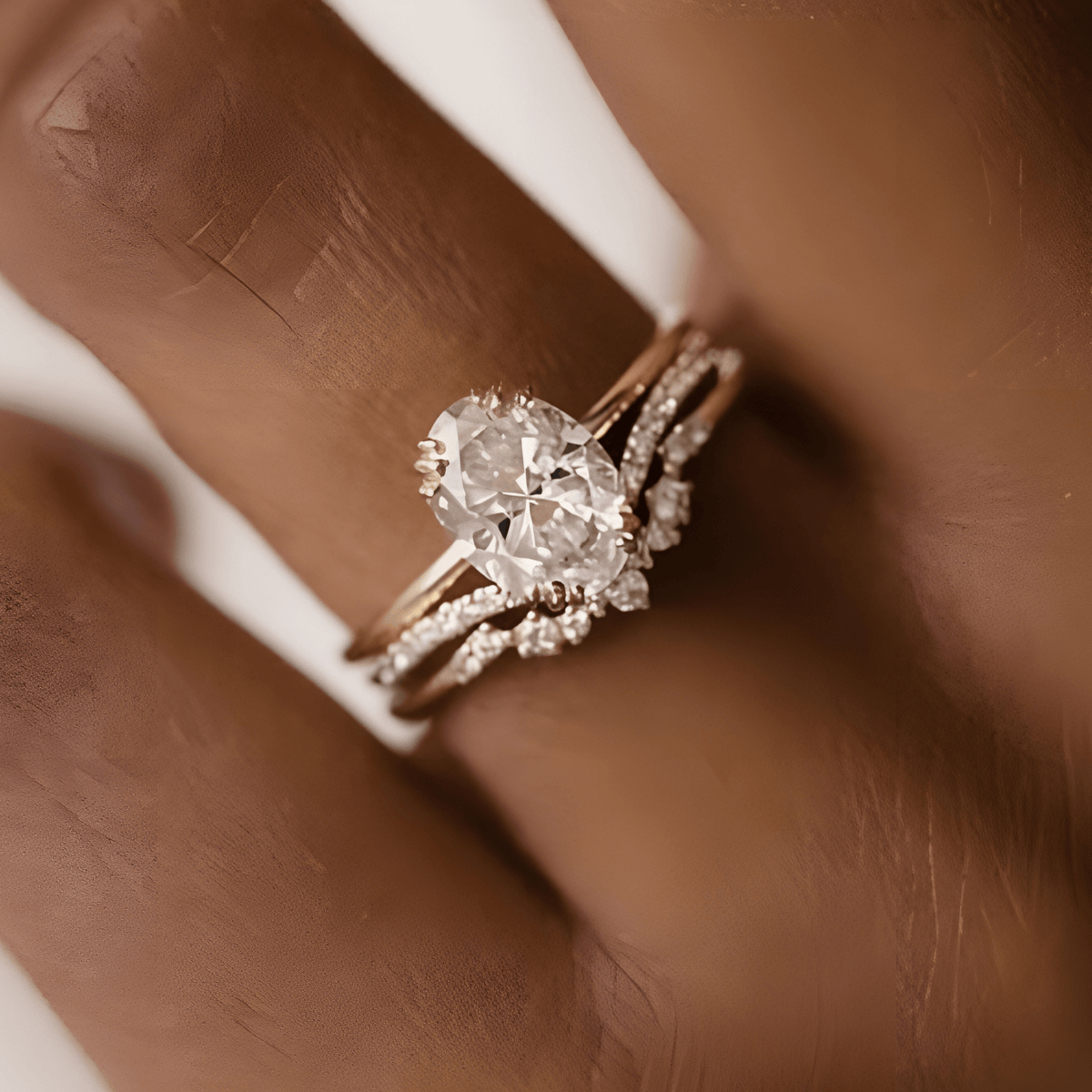
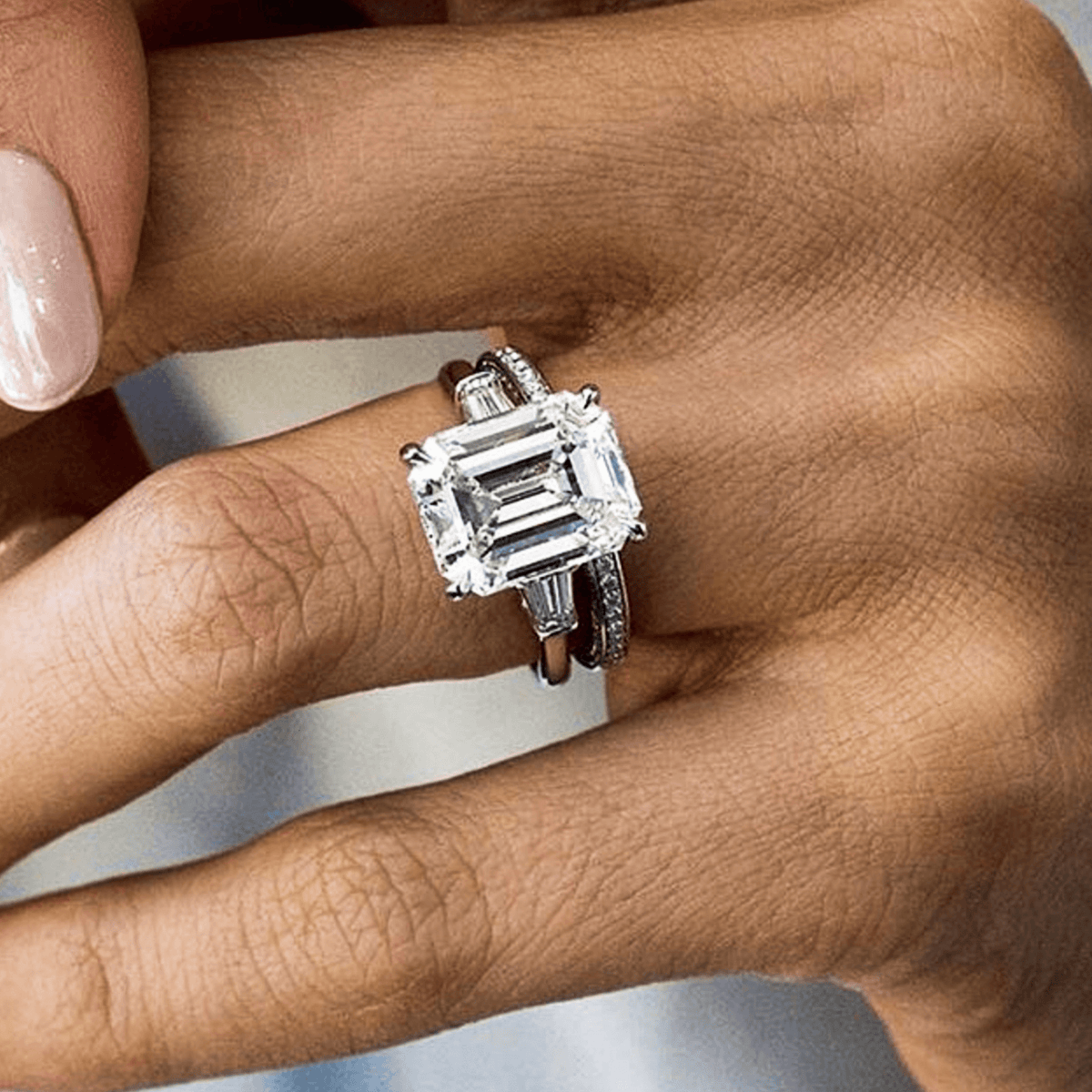
Emerald Cut
Emerald cut diamonds feature a rectangular shape with step-cut facets, creating a unique "hall of mirrors" effect. They typically have 57 facets and are known for their elegance and vintage appeal. Emerald cuts tend to show more color and inclusions than other shapes, so higher clarity and color grades are often recommended. Their large table and step-cut facets make them less forgiving of flaws, but they can appear larger than other cuts of the same carat weight.
Cushion Cut
Cushion cut diamonds, also known as pillow-cut diamonds, feature rounded corners and larger facets. This classic cut has been popular for nearly 200 years. Modern cushion cuts offer a balance between antique charm and contemporary brilliance. They typically have 58 facets and can be found in square or slightly rectangular shapes. Cushion cuts are known for their fire (colored light dispersion) and are often less expensive than round brilliants of similar carat weight.
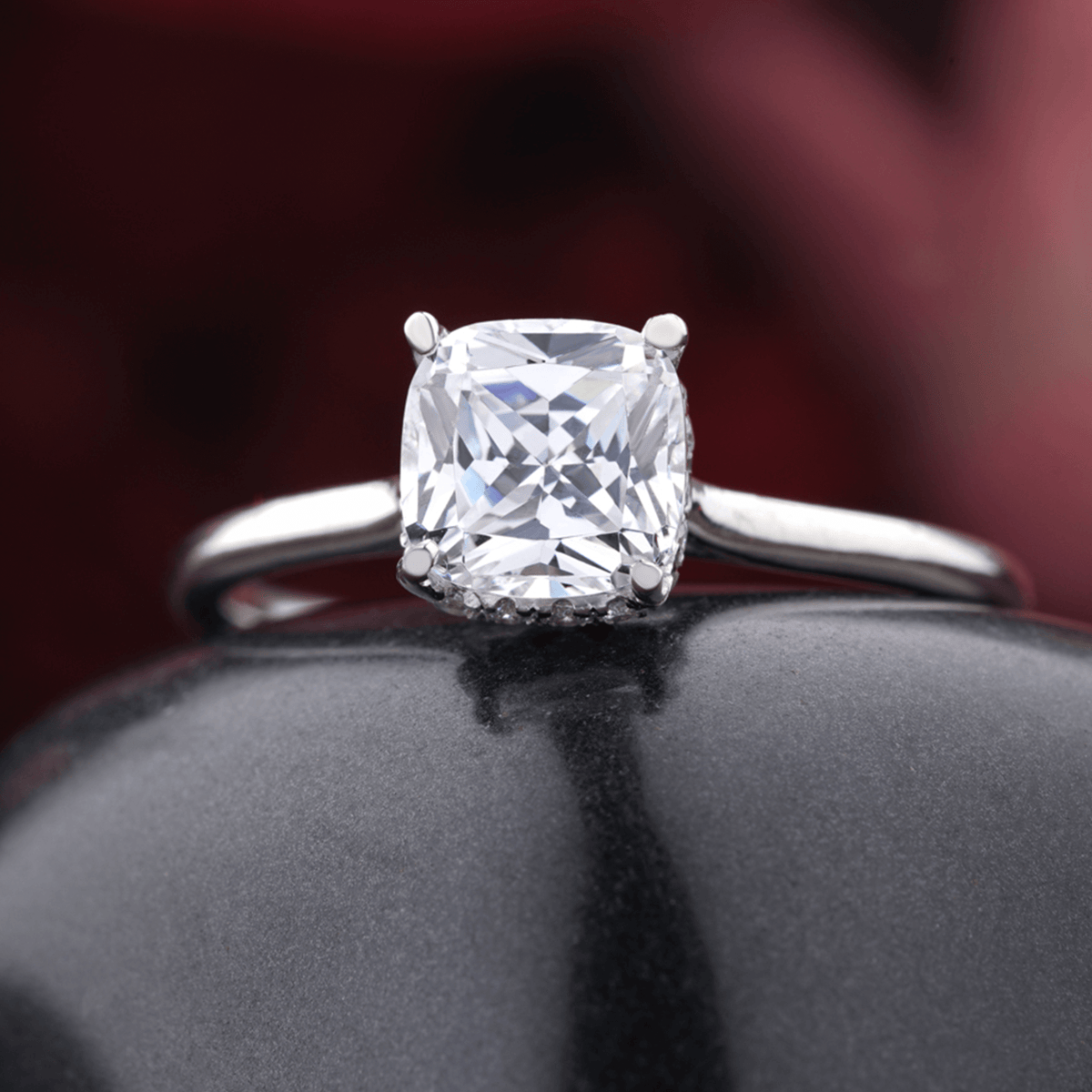
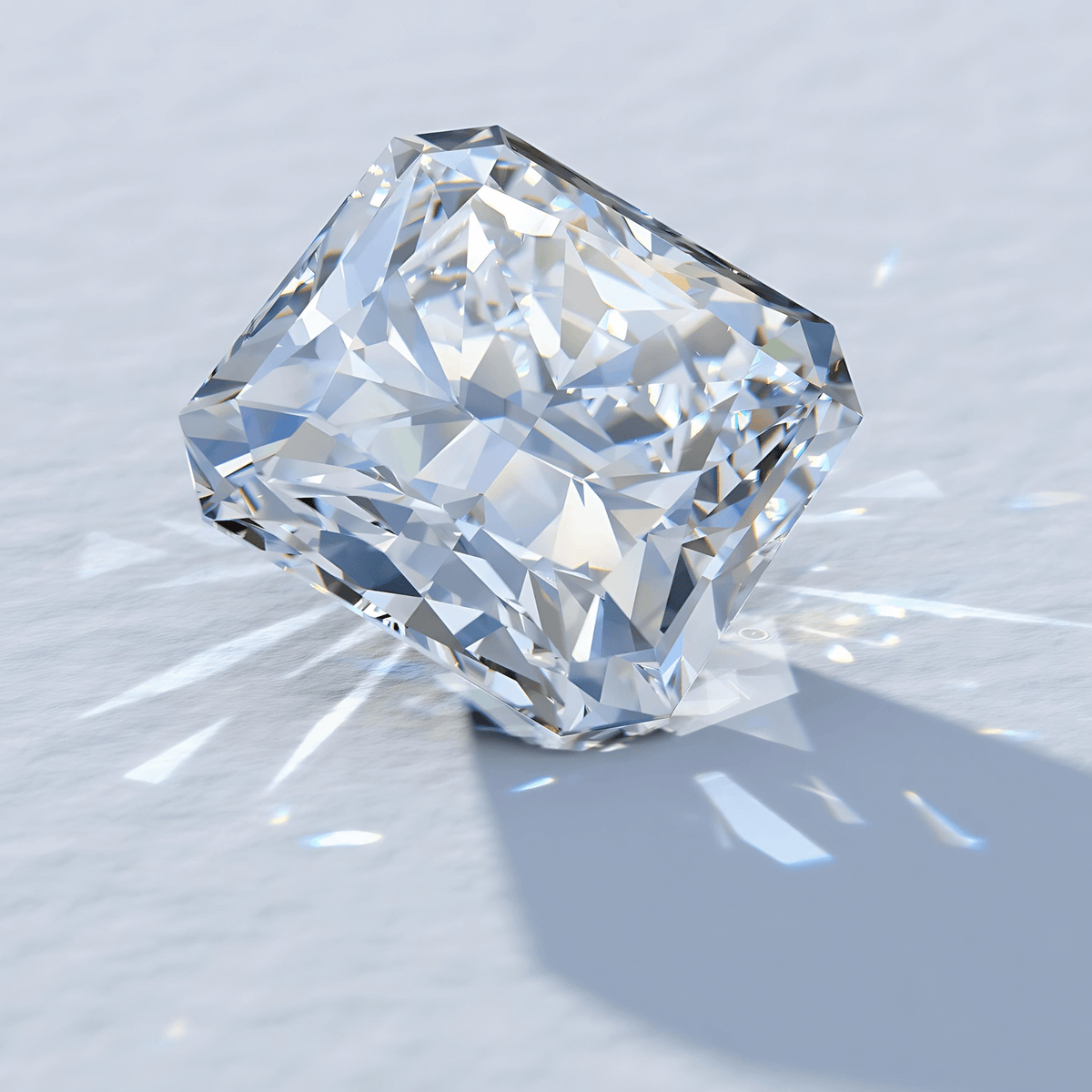
Radiant Cut
Radiant cut diamonds are rectangular or square, with cut corners. They continue to be popular, particularly for engagement rings. The cut is recognized for its remarkable brightness and fire, which rival round brilliant cuts. The stone hides inclusions nicely and seems bigger than its real carat weight. Radiant cuts are often the most lasting due to the absence of sharp points. They are commonly used as the center stones in three-stone rings.
Princess Cut
Princess cut diamonds, created in 1980, are the second most sought-after shape for engagement rings. They have a square or slightly rectangular face-up appearance with an inverted pyramid shape. Princess cuts are less expensive than round brilliants due to their efficient use of rough diamond material. They exhibit exceptional brilliance, though not quite matching that of round diamonds. Princess cuts require protective prongs on their corners to prevent chipping.
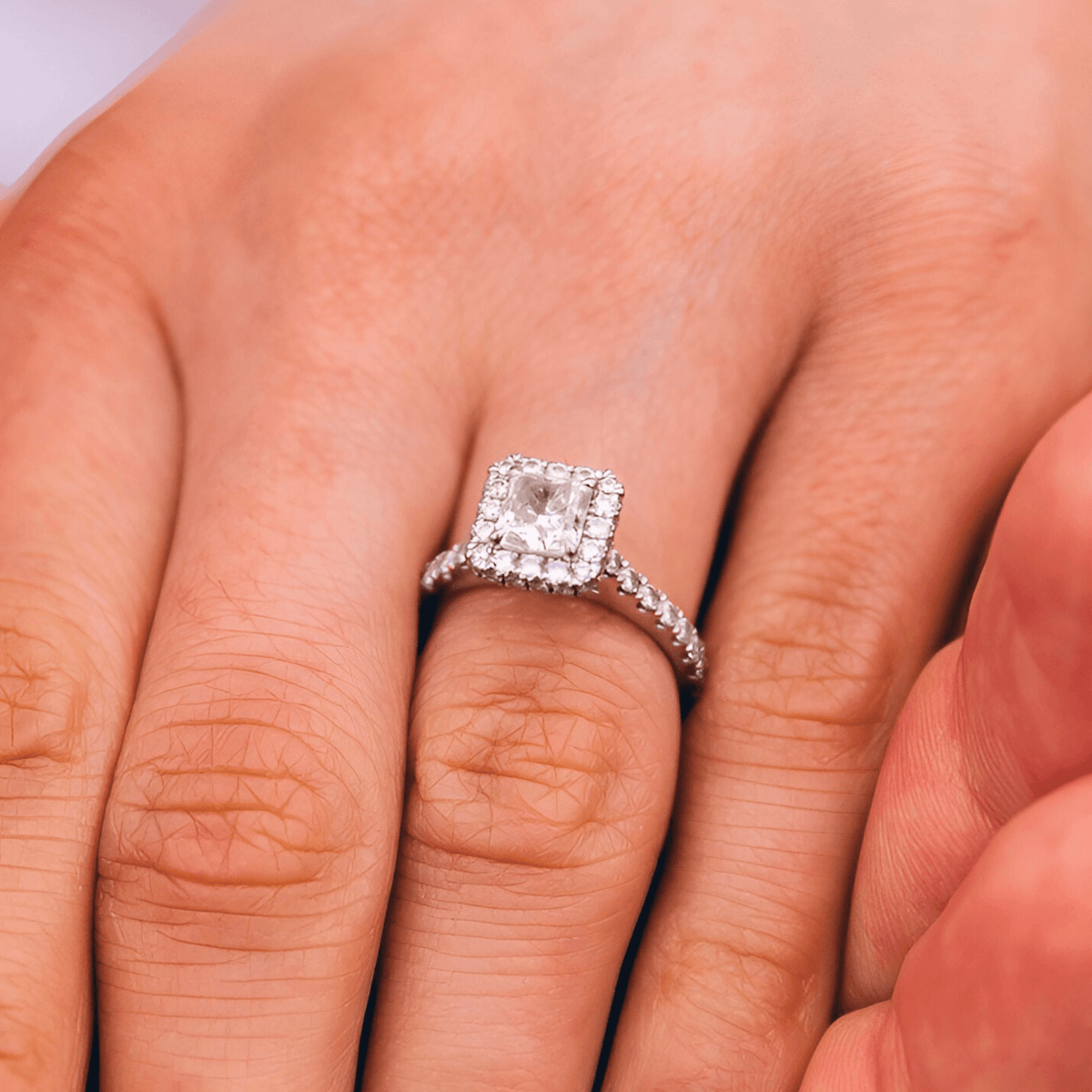
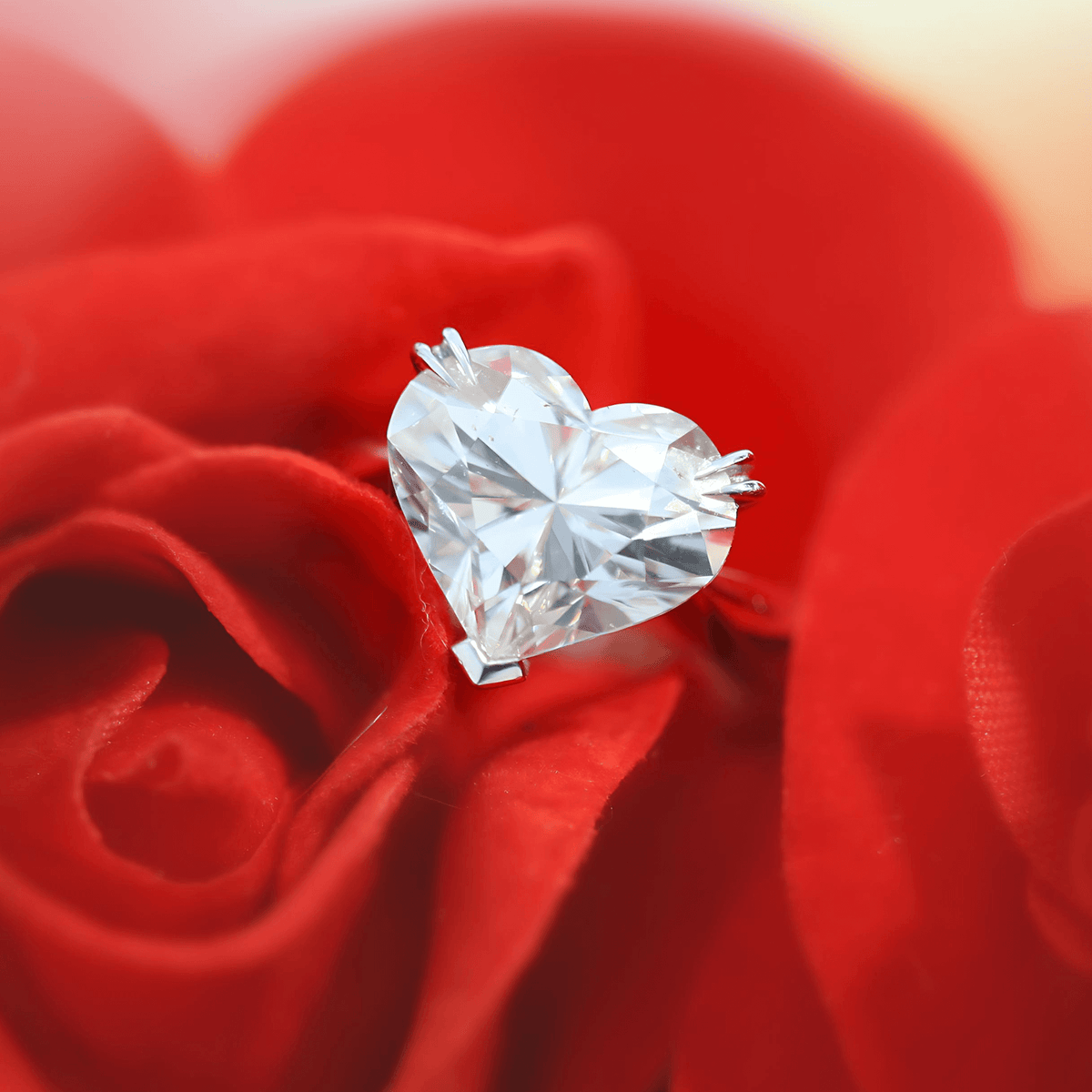
Heart Cut
Heart cut diamonds resembles a symmetrical heart and require high-quality cutting for proper symmetry. They have distinctive silhouette with two lobes at the top and a point at the bottom. They may display a "bow-tie" effect (a dark area across the center), which should be minimal in high-quality cuts. This cut is most popular in necklaces and solitaire rings.
What Makes a Diamond Cut High-Quality
Diamond proportions play a crucial role in determining cut quality. They refer to the relationship between various dimensions, including table size, depth, crown height, and pavilion depth. These proportions significantly influence a diamond's brilliance, fire, and scintillation. For round brilliant diamonds, ideal proportions typically include a table percentage between 54% and 57% and a depth percentage between 61% and 62.5%. These measurements ensure optimal light reflection and dispersion, resulting in maximum sparkle and visual appeal.
Symmetry refers to the precise alignment and arrangement of facets. It has a profound impact on a diamond's ability to reflect light effectively. Symmetry grades range from Excellent to Poor, with higher grades indicating better light performance. A well-symmetrical diamond allows light to travel through the stone as intended, bouncing off facets and returning through the table to the viewer's eye. Poor symmetry can cause light to exit through the sides or bottom, resulting in a duller appearance.
Polish quality affects a diamond's surface smoothness and overall appearance. After cutting and faceting, diamonds undergo a polishing process to achieve a glass-like finish. Polish grades, ranging from Excellent to Poor, are determined by examining the stone under 10x magnification. Common polish marks include scratches, nicks, and pits. While minor polish imperfections may not be visible to the naked eye, they can impact a diamond's brilliance and value.
Depth and table percentages are critical factors in a diamond's cut quality. The depth percentage represents the diamond's height relative to its width, while the table percentage refers to the size of the top facet in relation to the stone's width. These measurements significantly influence how light interacts with the diamond. Ideal depth and table percentages vary depending on the diamond shape. For round brilliants, a depth percentage between 59% and 62.6% and a table percentage between 54% and 57% are generally considered optimal for maximizing light performance and visual appeal.
In Conclusion
Diamond cuts have a significant impact on both the appeal and the worth of these stunning gemstones. From the traditional round brilliant to the beautiful emerald cut, each shape has distinct features that are attractive for many different styles. The cut has an immense impact on a diamond's response to light, affecting its brilliance, fire, and sparkle, making it an important aspect in determining overall quality.
Recognizing the complexities of diamond cuts enables customers to make informed choices when purchasing. Proportions, symmetry, and polish all help to improve a diamond's cut quality and overall attractiveness. By examining these factors, as well as personal tastes, one can decide on a diamond that genuinely shimmers as it expresses their unique sense of style.
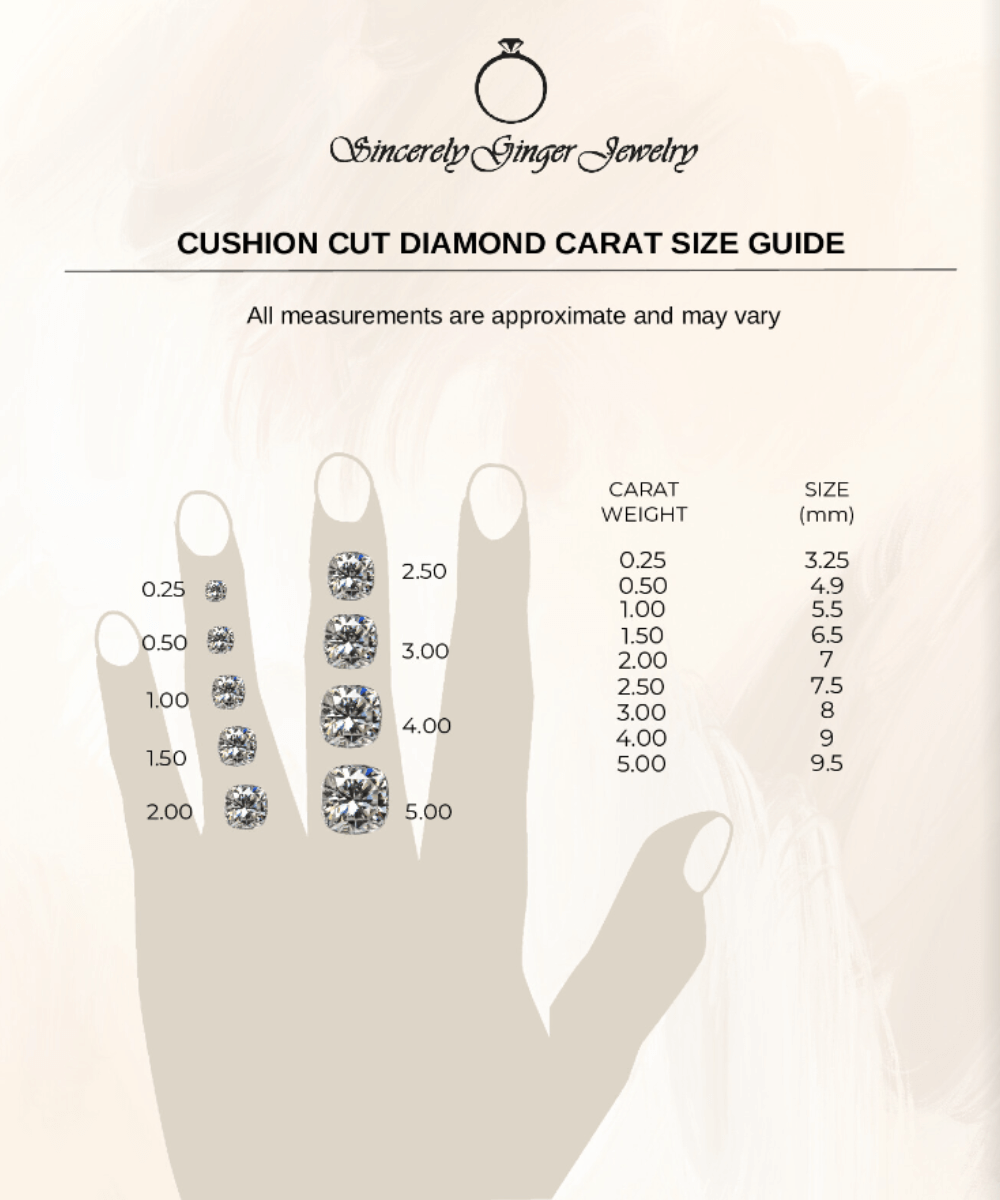
Carat Size Guide
For a visual representation on a hand, view our carat size guide flipbook. You will be able to zoom in. Click the button below to view. You can also download a copy in pdf to print by clicking here.
RELATED BLOG POSTS
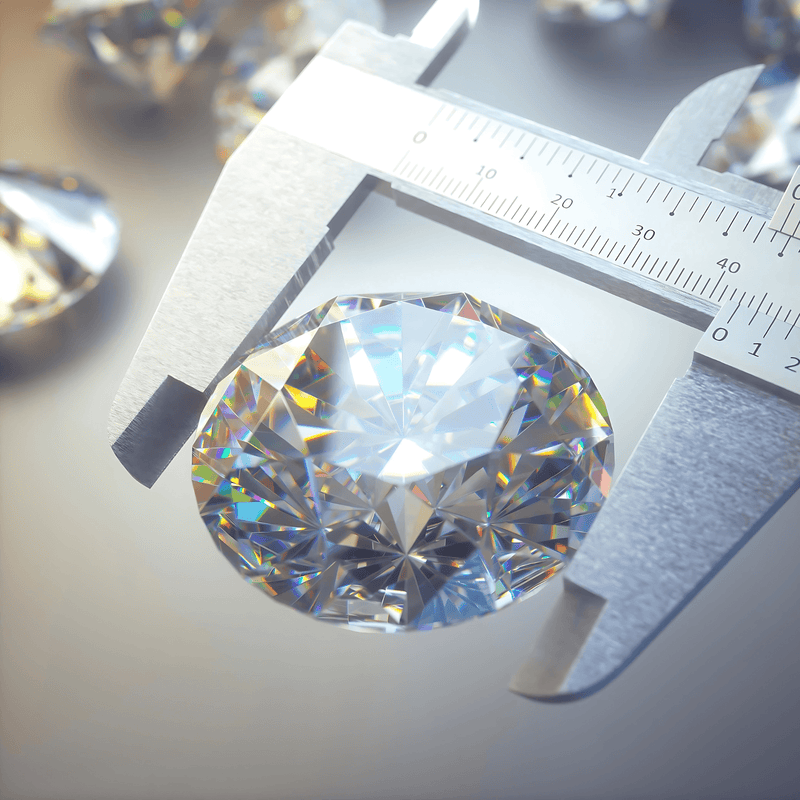
Diamond Size Chart: MM to Carat Conversions
Know the size before you buy. The diamond size chart is an indispensable tool for buyers and enthusiasts alike.
LEARN MORE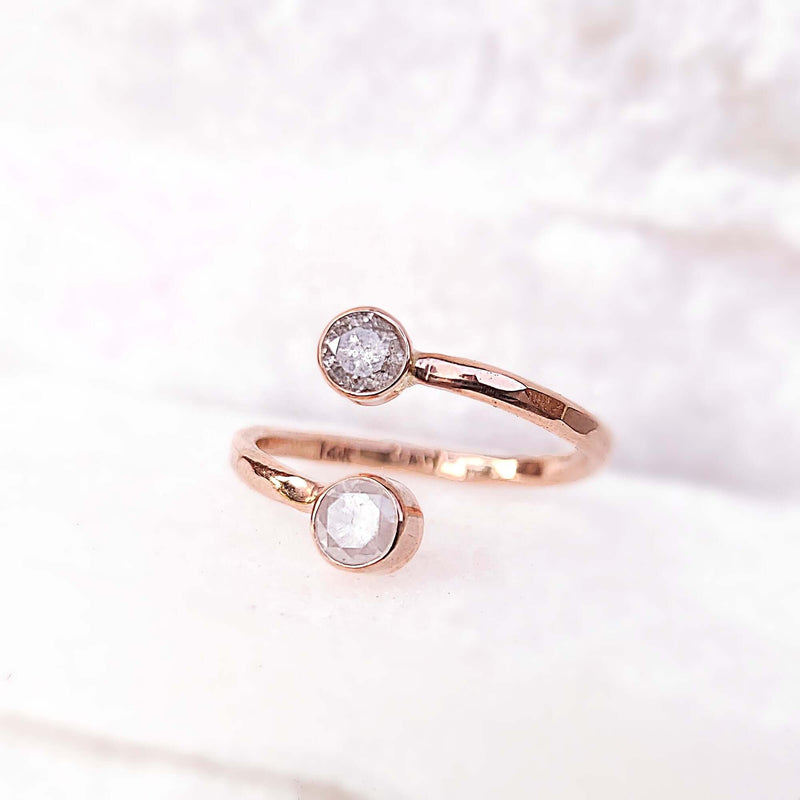
Exploring the Multifaceted World Of Diamonds
Diamonds, being the hardest known natural substance, are an appropriate symbol of the strength and everlasting quality of love.
LEARN MORE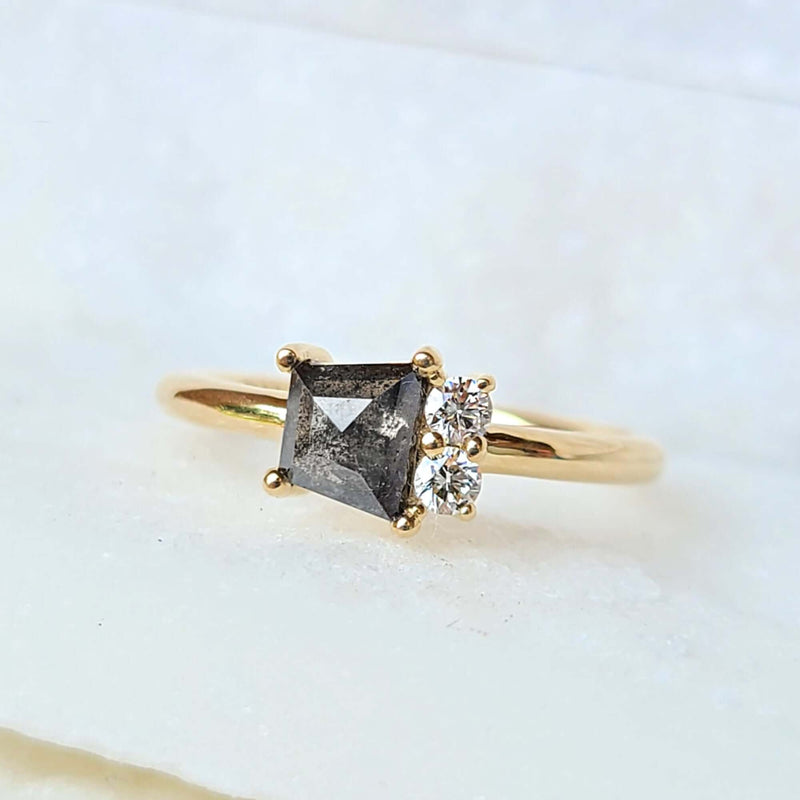
Alternative Engagement Rings: A Modern Twist
Alternative engagement rings are a fresh take on standard ring types that allow couples to express their distinctive style.
LEARN MORE